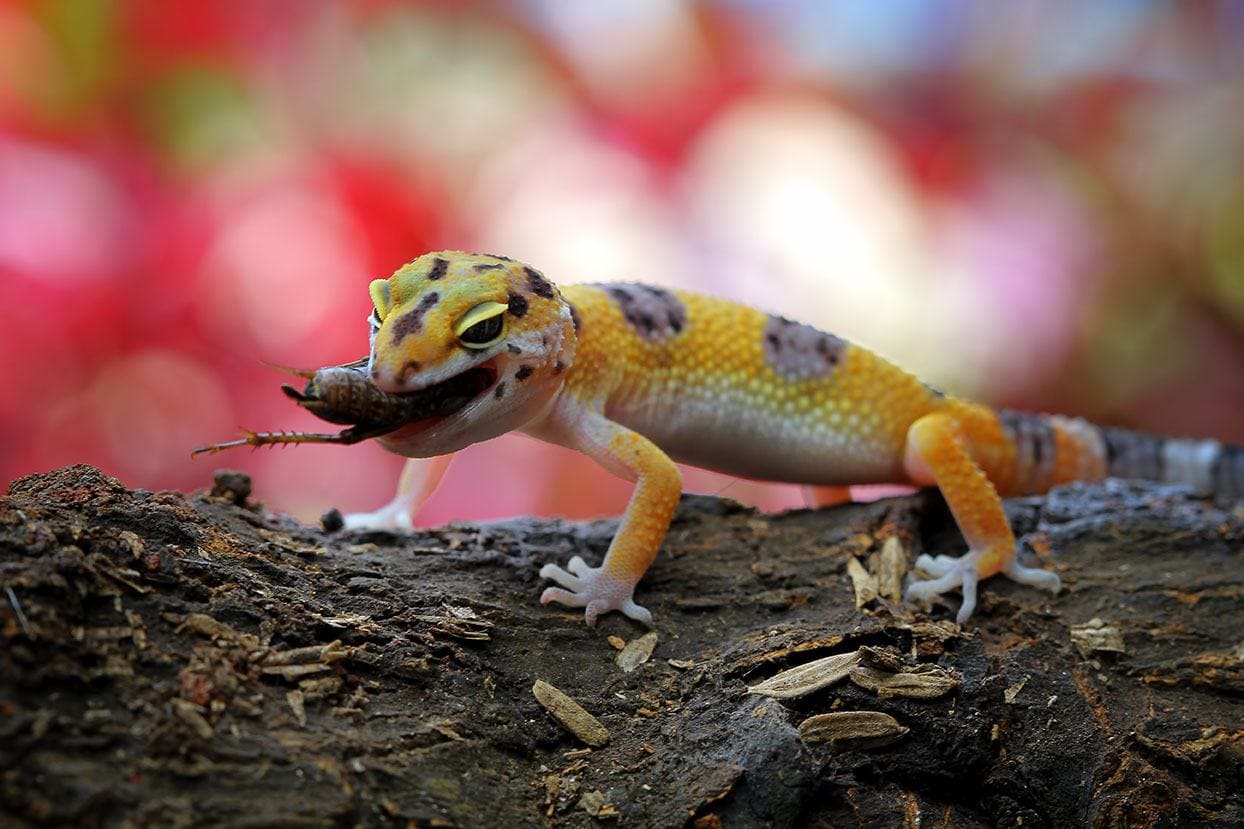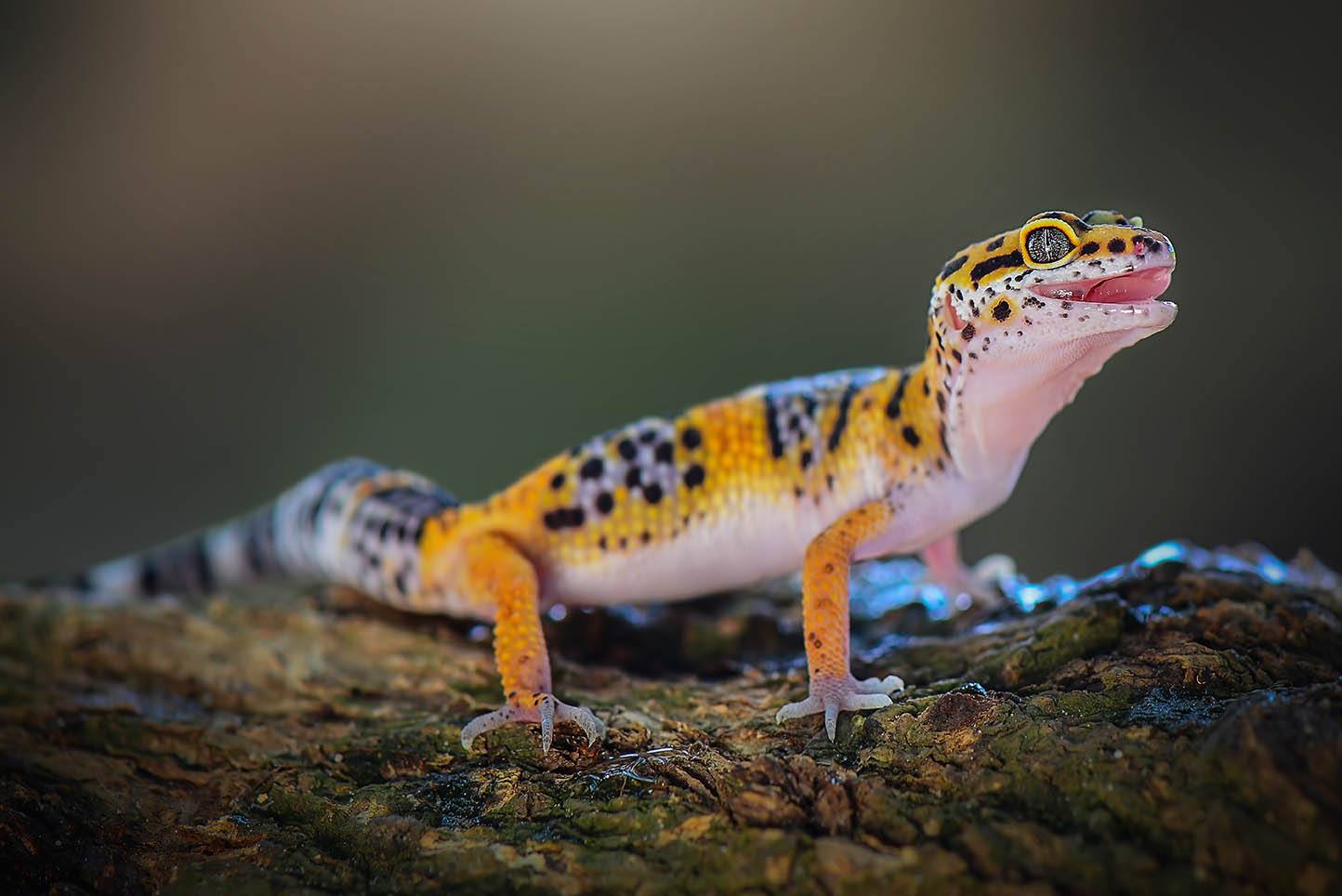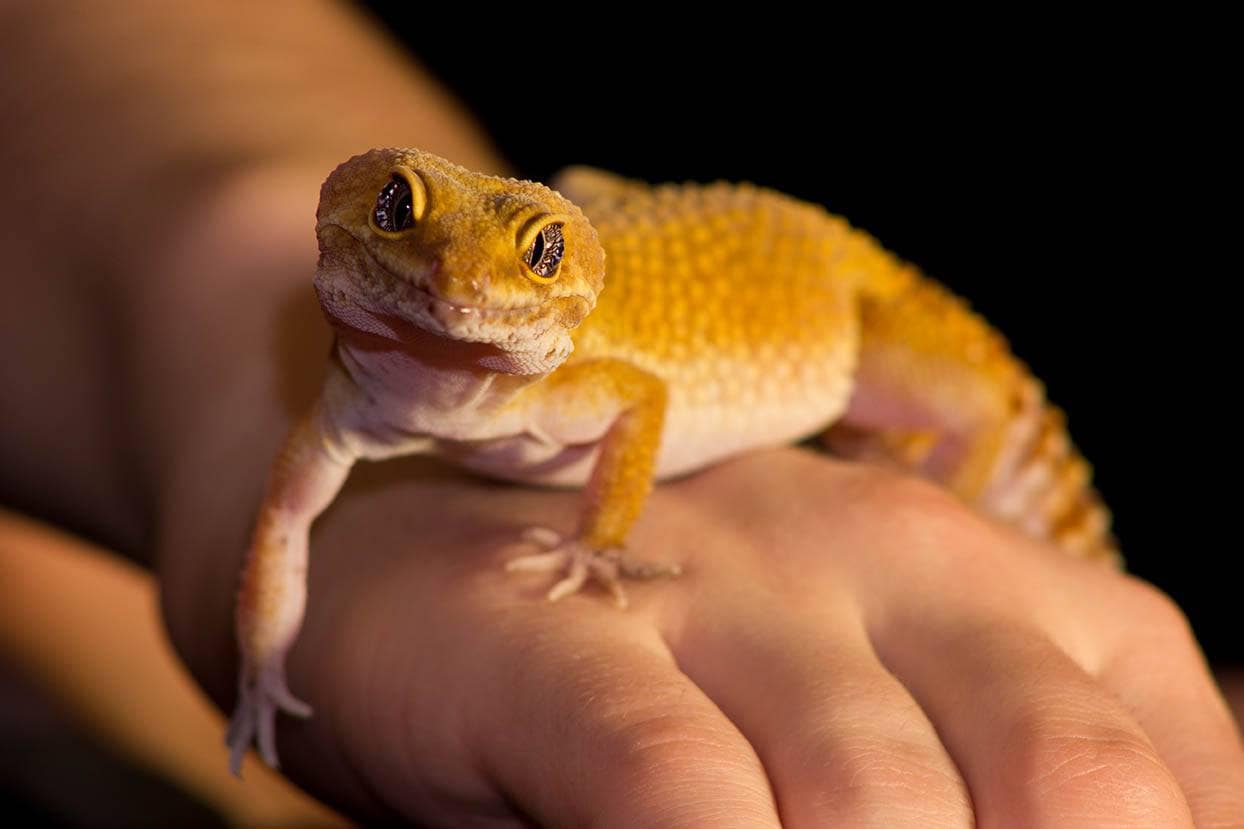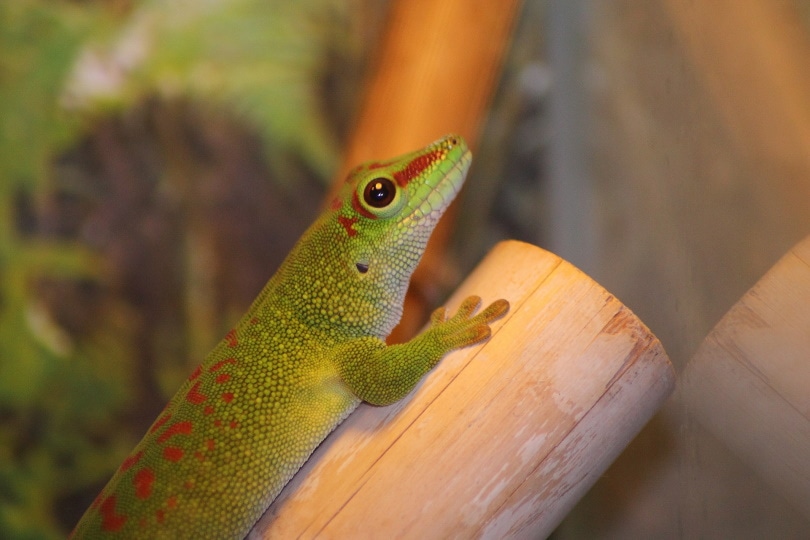
If you have just purchased your first gecko, you are in for a real treat, as they make great pets that can last 5 to 10 years if you care for them properly, which isn’t hard to do. You only need to provide them with the correct diet, make sure they get enough exercise, and maintain a suitable habitat for them to live in. We are going to help you understand how to maintain the proper humidity and temperature levels for the optimal health of your pet, and we’ll also cover lighting and a few other things to make sure your gecko lives a long, healthy life.
Maintaining an Ideal Temperature for Your Leopard Gecko
The gecko likes warmer temperatures, so you will need to heat the aquarium for optimal health. Geckos prefer a basking surface temperature between 94 and 97 degrees Fahrenheit. During the night, the temperature can drop down as low as 60 degrees, and many experts recommend that a drop in temperature can help the gecko stay healthier. Lower temperatures at night are natural, and dropping the temperature in your aquarium will better simulate nature. Most experts recommend reducing the temperature to between 70–77 degrees once the sun goes down. Many people also like to set up the aquarium so that there is a hot side with daytime temperatures and a cool side with nighttime temperatures, so your pet can be where it is most comfortable.

Heating Your Aquarium
The halogen bulb is going to be the best way to heat your gecko’s terrarium. These bulbs closely simulate natural light from the sun by producing UVA light that reptiles require to stay active. Look for a heat bulb that creates a broad spectrum of light for the best results. The downside to these bulbs is that the ultraviolet light production decreases over time, and since it still produces normal light, you won’t know the difference, so you will need to change the bulbs regularly even if they seem to be working. It’s also a smart idea to get an accurate terrarium thermometer so you can check the temperature regularly to make sure it is within ideal limits. Some brands will allow you to monitor the temperature and humidity from the same device.
Deep Heat Projectors are very similar to halogen bulbs and produce the ultraviolet light that your reptile requires, but these systems are a little more complex than halogen bulbs. They may not be for everyone because they require special dimmers to keep the bulb from getting too hot. Ceramic heaters do not produce the right type of infrared light to keep your gecko healthy, so they are unsuitable for daytime use. However, your pet can see the infrared light created by the other types, and it can interfere with their sleep cycle. Many experts recommend using ceramic heaters at night to maintain the temperature while allowing your pet the rest it needs. Other items, like the heat mat, might be helpful in some aquariums but we recommend the more efficient methods we’ve already discussed.
Maintaining an Ideal Humidity for Your Leopard Gecko
Geckos are desert animals, and they can tolerate low humidity but prefer to stay in an environment that keeps the humidity between 30 and 40 percent. Most homes in the United States have humidity in this range, so you won’t need to worry about it too much unless you live in a dry climate.

However, geckos will need much higher humidity to shed their skin, which they will do every one or two months. Your pet will need the humidity to be 70% to 80% to remove the old skin.
Hides
The best way to make sure there is enough humidity for your gecko to shed its skin is to create a moist hide in the terrarium. Your gecko will also enjoy a dry hide and a cool hide. We’ll look at those in this section.
Moist Hide
The moist hide is the most critical because it will help your pet with its shedding and help regulate body temperature. If your gecko is about to lay eggs, she will likely put them here. Place the moist hide in the warm side of the tank, or it may be too cold to function effectively. You can purchase a commercial wet hide, or build one from a plastic container as long as it can handle the heat. Inside the hide, you will need to place a special substrate, like sphagnum moss, that will hold the moisture. You can also use paper towels or coconut fibers in a pinch.
Sphagnum moss is naturally antimicrobial, doesn’t smell, and holds moisture for a long time, so it’s the type we recommend. Put about 2 inches inside the hide and spray it with water when it becomes dry to provide your pet with the humidity it requires.
Dry Hide
The dry hide is identical to the moist hide, but you don’t add water, so you can use a less expensive substrate if you want. The dry hide’s primary function is to provide shelter for your pet while it rests. You can place several of these in the terrarium for maximum comfort.
Cool Hide
The cool hide is identical to the dry hide, but you place it in the cooler part of the tank to provide your pet with a place to relax and get away from the high temperatures. You can have more than one, but your gecko won’t use it as frequently as it uses the others.

Lighting
As we mentioned earlier, halogen bulbs are your best bet because they supply the right type of UV light to keep your pet healthy. You should run these lights for 14 hours in the summer and 12 during the winter. When the light is out, use a ceramic heater to maintain temperature. Many people use a red, blue, or black light to maintain temperatures at night, mistakenly believing that geckos cannot see this light. However, it is visible to them, and it can disrupt their sleep cycles. Blue lights can damage the gecko’s eyes, so you should avoid using them.
Summary
Maintaining your gecko habitat may sound challenging, but it doesn’t require much adjusting once you get it running. You will need to keep your eye on the temperature and humidity levels in the terrarium and check the substrate in the moist hide frequently to make sure it isn’t dry. You will also need to change the bulbs every 6 months or so, even if they are working, ensuring your pet is getting the right amount of UV light. Otherwise, your days should be free to feed and enjoy your new gecko for many years to come.
We hope you have enjoyed reading over this short guide, and it has given you some ideas and answered your questions. If we have helped you provide a more comfortable habitat for your pet, please share this guide to the optimal temperature and humidity levels for the leopard gecko on Facebook and Twitter.
Featured Image Credit: Elina Litovkina, Shutterstock







